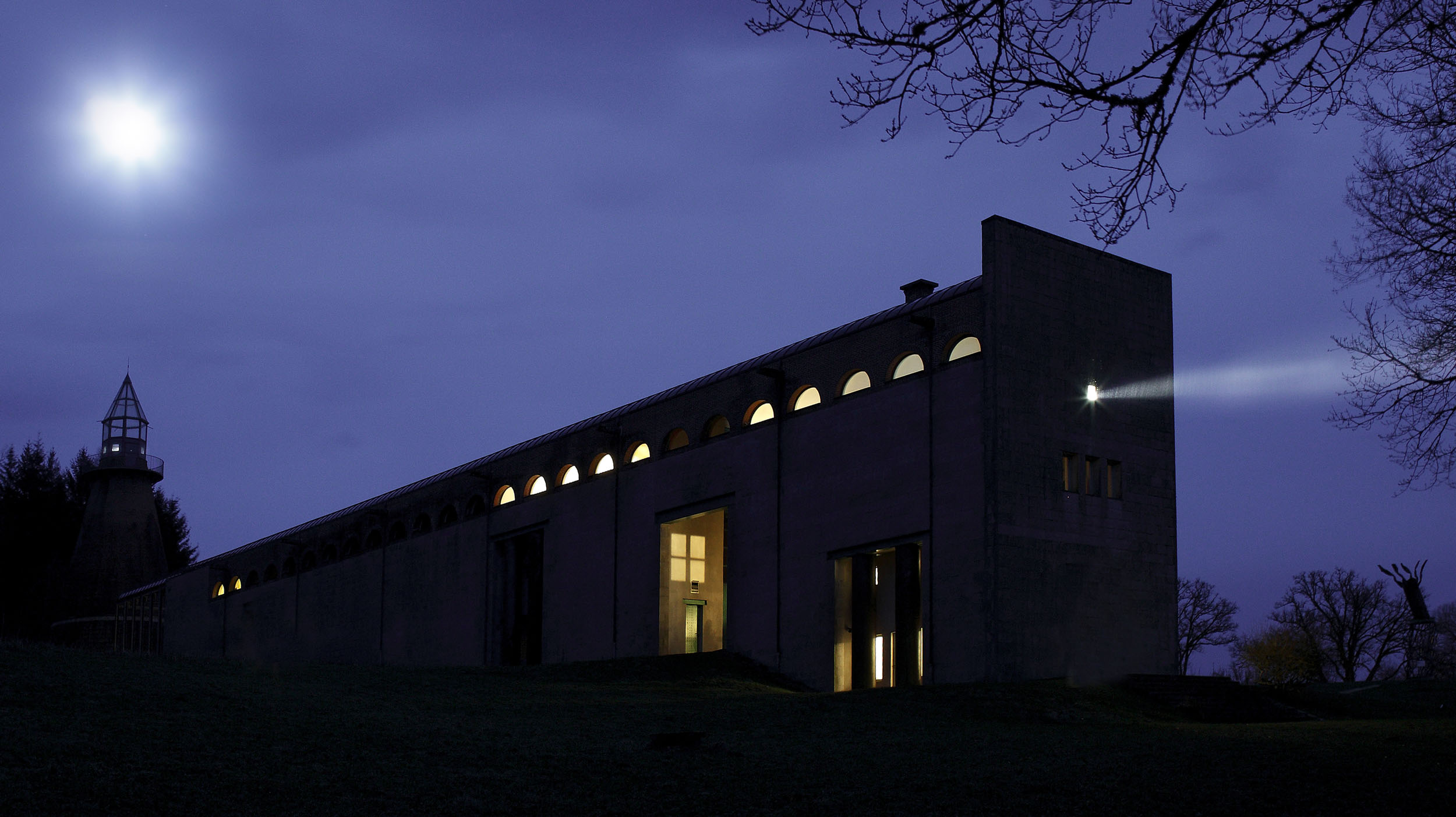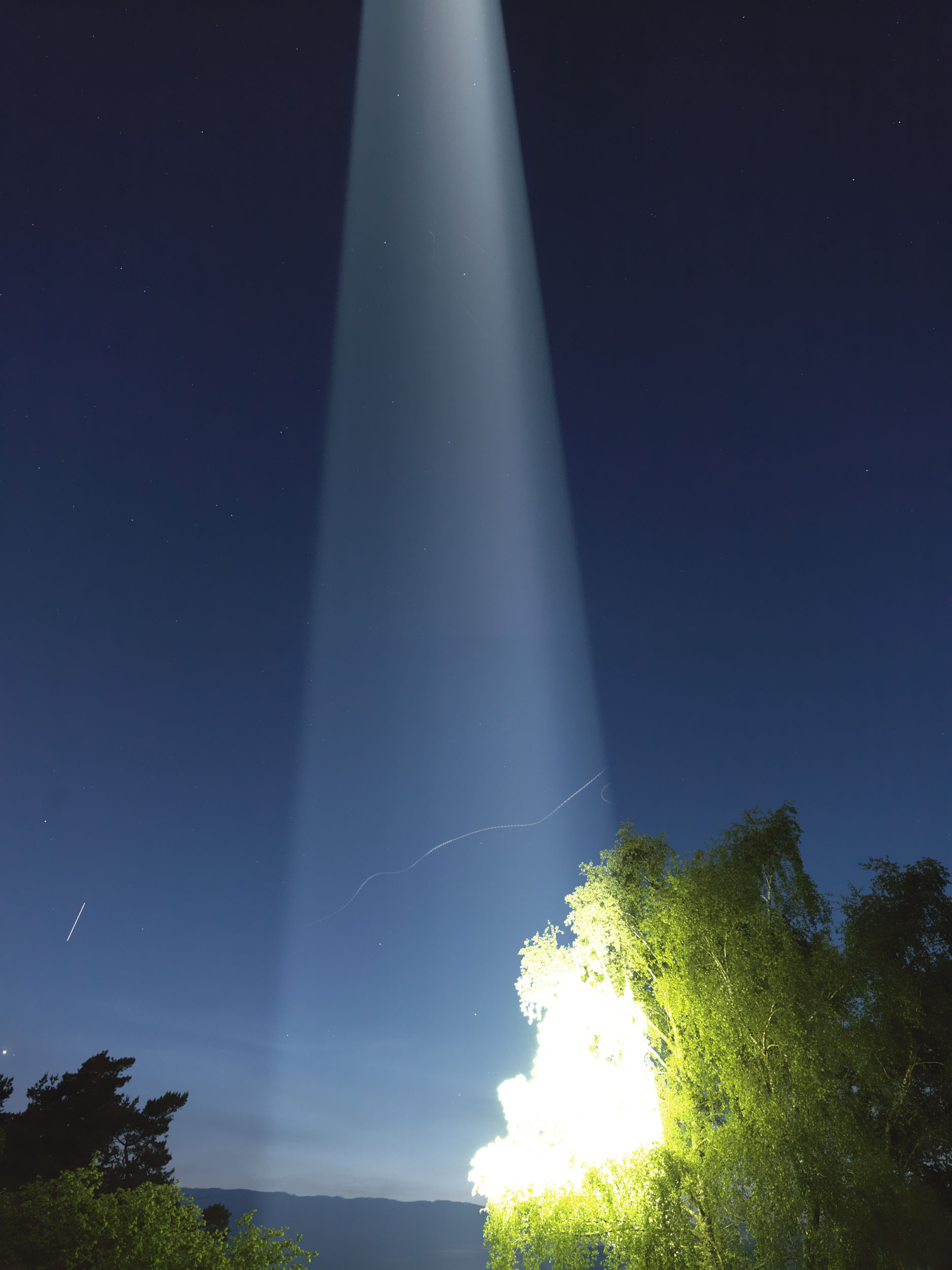The series “White Museum” assumes a key position within an extended notion of sculpture, making the landscape a part of the installation. An interior space of the exhibition building becomes a projection cabin, from where a film projector is throwing a squared field of white light to the outside. The landscape becomes a three-dimensional cinematic image, which can be watched from an empty room inside the building. The earth is turning, the visitor is standing still: he is all of a sudden inside the control mechanism, which he would be subject to outside. The outside world is becoming an image, an idea. "White Museum" has been shown in different site specific version, starting from 2010 where it was premiered as part of the exhibition Rosa Barba: Is it a two-dimensional analogy or a metaphor? at the Centre international d’art et du paysage de l’île de Vassivière, where the surrounding park became part of the installation.
“The locations are those that mark the edges of things: sea to land, private land to public, building to street, ground to air. Barba’s projections make visible the constant activity that passes between these edges, gesturing toward that which is socially defined, illuminating the human processes at work in the production of space. In the cinema, we can only imagine what is offscreen or just out of frame, while the geometry of the image in "White Museum" creates a still-visible negative space bordering the light; it is in this augmented darkness that we feel the film’s tension.” (excerpt from Victoria Brooks, "In the Imaginary Spaces", in: Rosa Barba: The Color Out of Space, New York, 2016)
White Museum (Vassivière), 2010
70mm white film, projector
Images: Installation view at Centre international d’art et du paysage de l’île de Vassivière, France, 2010. Photo: François Doury © Rosa Barba


